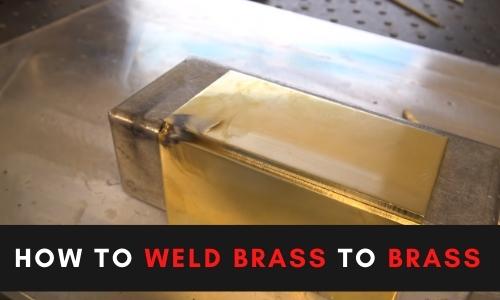Have you ever tried to weld brass together? It is not a straightforward operation as brass is an alloy and will melt at a much lower temperature than the melting point of pure copper.
Brass is an alloy of copper and zinc, and there are a number of other metals present in small amounts, so it is quite complicated to know the melting temperature of brass.
This blog will look at how to weld brass to brass and how it can help you save money by extending the life of your equipment.
What is Brass?
Brass is a mixture of mainly copper and zinc. The percentages of copper and zinc can vary, but it must be over fifty percent copper.
Pure copper metal is too soft for useful everyday objects, and pure zinc metal is too brittle. When the two metals are combined, the properties of both metals can be taken advantage of.
The hardness comes from the zinc and the strength from the copper.
A brass object can be made harder by adding tin to it.
A brass instrument is a wind instrument. It is an instrument for producing sound by means of the flow of air generated by a stream of the breath of a player through a tube.
Brass is also a color, a mixture of red and yellow. Brass is an alloy made from a combination of two metals: copper and zinc.
How to Weld Brass to Brass
Brass is a reasonably easy metal to weld, and the actual process of welding brass is the same as that used for mild steel.
The only difference between welding mild steel and brass is that when welding brass, you should use argon as a shielding gas for MIG or TIG processes (rather than CO2 used for mild steel).
Argon assists in preventing contamination from oxygen in the atmosphere. Oxygen will embrittle the brass, making it crack or produce minute holes at the weld location.
The main difficulty with welding brass is actually cutting, filing, and manipulating it. Brass is fairly hard. As a general rule, you should start by cutting or filing the brass to fit how you want it before attempting any soldering or brazing at all.
Even if you have no intention of actually “welding” your piece of brass to another (for instance, using a TIG welder), you may need to clean up your cuts and grooves on the inside surfaces after refining them (if doing so doesn’t destroy the design).
This is where understanding some of the basics of working with brass can come in handy.
5 Easy Steps: Weld Brass to Brass
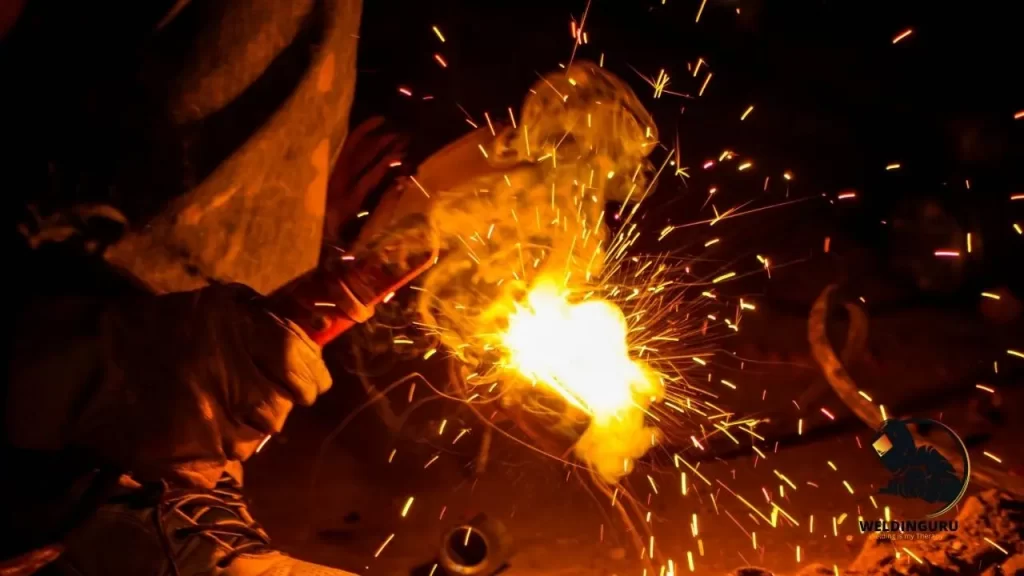
Welding brass can be easy if you know the right techniques and have the right equipment. It’s a difficult material to work with, but with this guide, the process will be simple.
Step 1
Before you weld brass to brass, make sure the zinc content of the materials is low because zinc melts at a lower temperature than copper.
An oxyacetylene torch works for welding most items made of brass because oxygen and acetylene are stored separately, which allows more control over the flame.
Step 2
In order to braze-weld brass, you will need a little water, some braze-welding flux, and some braze-welding wire. Mix the flux with water and apply it to the surfaces to be welded.
Step 3
To enable a strong weld, we have to assume that the welder can produce enough heat to actually fuse the brass. Use a lower flow of acetylene when welding brass.
We also have to assume that he is using a mixture of oxygen and acetylene, which is more likely to produce a stronger weld.
In order to get a strong oxygen-rich flame, you must add less acetylene to the mix until you have a flame able to melt brass.
Yes, brass does have zinc in it, and welding on or near zinc will cause zinc fumes. To prevent this from happening, use a smaller flame at less temperature than the job requires.
Zinc evaporates at a lower temperature than the melting point of brass and will cause poor fusion at the weld joint.
Step 4
Consider if you need to match the color of the existing brass piece. When this is a concern, braze welding with gold-colored filler is recommended.
To do this, you will use a low zinc brass filler rod and high-quality flux. If color matching is not an issue, you can braze weld with a filler that will cost less and be easier to find.
Copper’s high melting point is actually a big problem when it comes to brass. Unlike other metals, brass can’t be welded, but if you use brazing or fusion welding, you can come up with a decent bond.
Step 5
Brass conducts heat better than steel, so when you’re welding brass, it’s important to use a welding tip one size larger than you would if you were welding steel.
Can you Weld Brass with TIG Welding
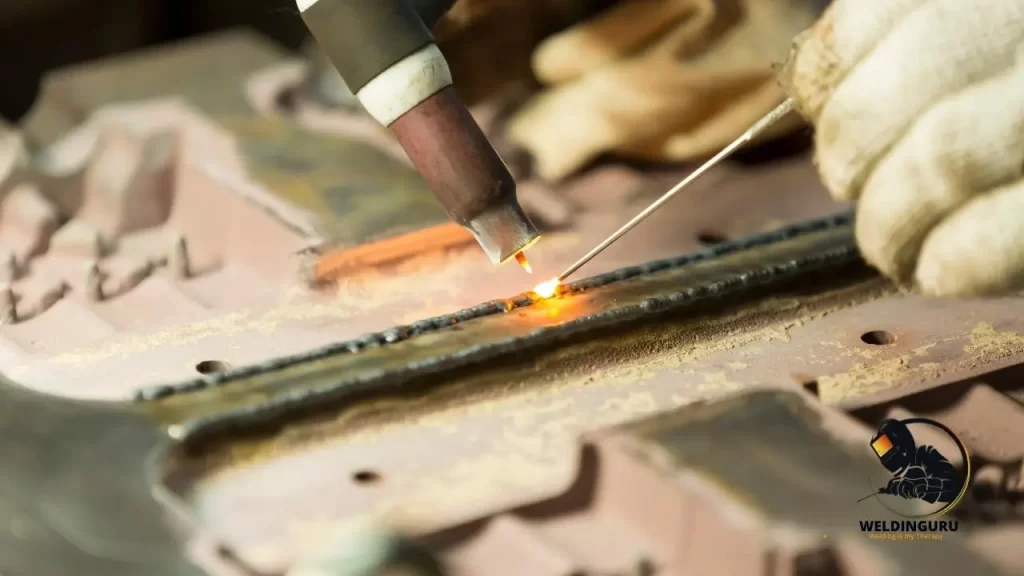
Yes, you can. The best way to weld brass is to TIG weld. TIG welding uses a tungsten electrode to heat and melt the metals.
When you TIG weld brass, you will need to use a filler rod that is made out of nickel. You should be able to get this at any hardware store.
The reason you need the nickel filler rod is that when the brass and the nickel filler rod come together, they form a eutectic alloy which is a liquid and the filler rod melts into the brass.
This creates one solid piece of metal. You should practice on some scrap pieces of brass before welding anything that you need. Practice makes perfect.
If you are welding brass with a TIG welder, the recommended filler wire to use is ER70S-3. If you want to weld copper-nickel alloys, the best filler wire to use is ERCuNi.
When welding copper-nickel alloys, it’s important that you keep the heat down, as too much heat can cause cracking.
The ideal setting for welding brass with a TIG welder is between 25 and 45 volts. You should also be using Argon gas when welding brass with a TIG welder.
Although, When it comes to welding brass using the TIG process, you can use a non-alloyed filler metal made of brass or bronze.
In your case, it would be better to use the same material as your parent material. If you are joining different metals, then the more similar they are to each other, the less chance for cracking there will be when welded.
Can you Weld Brass with MIG Welding
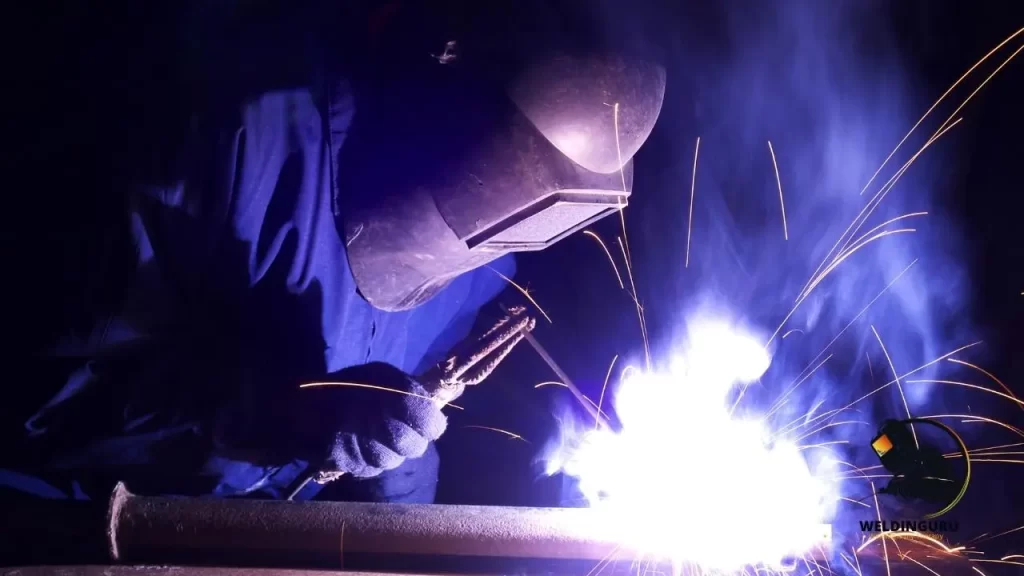
Yes, you can weld brass with a MIG welder. But you need to know the reasons behind it properly. If you don’t, you may face serious issues.
Welding is a process in which two metal materials are joined together to make a single object. In this process, heat is produced.
This heat makes the metals change their states and allows them to be joined together to form one metal.
The strength of this newly formed metal is generally higher than the original two metals. So based on the reason, you can weld brass with a MIG welder.
Here is why:
The wire used in the process for MIG welding is unalloyed (pure) iron. This means it has no carbon content. Iron melts at 1535C.
Brasses melting point is 1084C. The MIG welder can reach up to 750C if it’s supplied with enough amperage.
The optimum heat input is between 500C to 750C. Higher temperature causes excessive heat input into the weld, which is not good for the quality of the weld.
But there are different types of welding processes, one of them is flux welding, which will cause the brass to corrode, so the answer is no.
But Mig Welding can weld brass only if the materials are clean, which means the material won’t cause the weld to crack or become brittle. Then the answer is yes.
Can you Weld Brass with Flame Welding
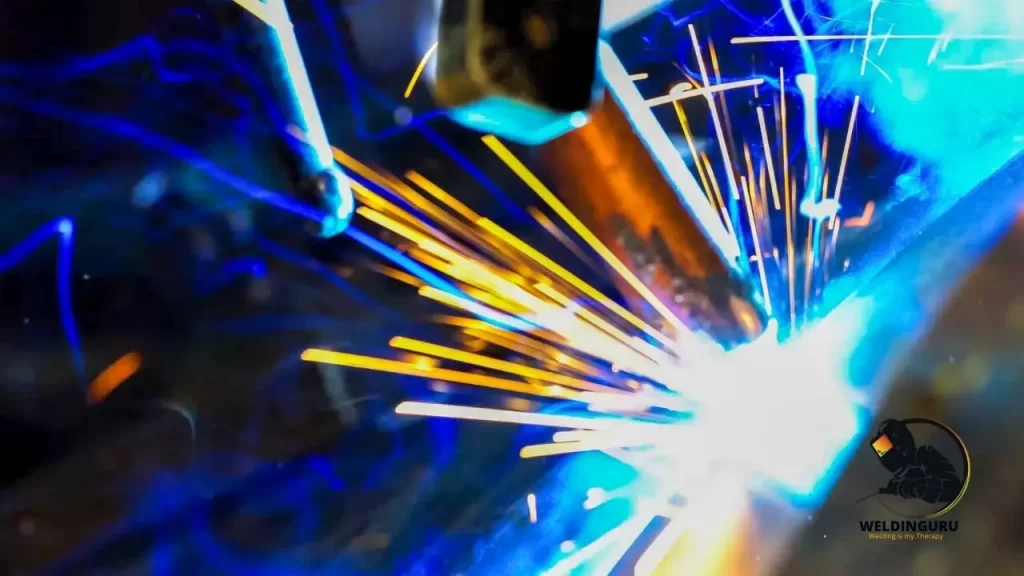
Yes. But the process for doing so is a bit complex. Let us first understand what Flame Welding is. Flame welding is a commercial process in which two materials are joined together by converting the surfaces to oxides at high temperatures and then fusing them with an oxyfuel flame.
The process is also called oxidation welding, oxyfuel welding, and gas welding. As the flame heats the metals sufficiently and converts them to oxides, a metallurgical bond is formed between the two surfaces.
The flame is usually fueled by a mixture of gases and oxygen, which is fed through the torch.
The process of Flame Welding is designed to be used on certain types of materials. For instance, it’s not recommended to use it on material like Titanium or any kind of metal that could catch fire.
Brass is literally a combination of three metals mixed together zinc, copper, and tin. So it likely is not going to be something that will be welded by this process.
The reason is that the flame is too hot. In order to actually weld something like brass, you want to use a different process.
Welding Tips when Welding Brass
It’s pretty easy to weld brass, but there are a few tips you’ll want to keep in mind.
First, make sure your brass is clean before you get started. The best way to do this is by using a solder flux that is specifically formulated for brass welding.
Additionally, you will want to use a wire brush to remove any residue from previous welds, if possible. This will not only ensure that the weld you’re about to make will look smooth and seamless.
It also means you won’t have to worry about any contaminants getting into your new weld and causing problems later.
When it comes time to apply heat, try not to overheat the base metal.
If it gets too hot, it could melt away some of the zinc content or other materials in the brass, which could cause issues with the quality of your finished product down the road. You don’t want that!
To start the weld, you must tack it into place using the same technique you would if you were welding aluminum or steel.
As mentioned above, It’s important to use low heat when tacking the brass into place, as this will prevent it from burning through the material and creating holes in your project.
When choosing what kind of filler rod to use when welding brass, there are two options: copper, zinc, or copper-tin.
The copper-zinc rod is most useful for high-strength applications, while the copper-tin rod is best for low-strength applications.
After tacking your brass, you can move on to welding the seams together with your TIG machine.
It’s important to remember that brass is an alloy of copper and zinc. The melting point of copper is 1083 degrees Celsius, but the melting point of zinc is only 420 degrees Celsius.
If you’re going to weld brass, you need to keep your torch significantly hotter than the melting point of zinc so that the zinc doesn’t melt and wash away.
In general, when welding brass, your welder should be running at full temperature.
It’s important to set the amps correctly when welding brass so that they’re high enough to melt through the material but not so high that they burn it instead of melting it.
Welding brass is doable if you’re only using brazing rods, but it can be very difficult if you’re using an oxyacetylene torch. If you want to use a torch, it’s best to stick with silver solder.
It’s important not to mix brass with other metals when welding. The chemical reaction that can occur when brass comes into contact with iron or zinc is called dezincification, and it will cause the brass to become brittle and crack.
Some people think that welding brass is dangerous because of the mercury that melts off when the metal gets hot, but there isn’t enough mercury in brass to cause any health problems.
Finally, once again, be sure that you’ve got all your tools cleaned up and ready for another day on the job tomorrow.
Don’t let them sit around collecting dust while they wait patiently (or not so patiently) waiting until next week when they’ll finally get used again…that’s just asking for trouble!.
Final Thought
The process of welding brass to brass is relatively simple, as brass and brass are both types of metal.
Although, there are some precautions that need to be taken to ensure that you are able to weld the two together and not harm any other part of your project.
This article is written to show how to weld brass to brass, it’s a very common question that I receive, and I hope that this article helps.
Feel free to read the article and ask any questions that you may have. The article is intended to be a good introduction before you make any attempt to weld brass to brass.
FAQs
What is the best way to weld brass?
Gas-Welding of Brass The most common method of gas welding is an oxygen-enriched flame, where the filler material is argon or a mixture of argon and acetylene. Stainless steel also reacts well to this process and can be used as the torch tip.
Is brass welding strong?
Brazing is a very thorough welding process that creates a strong, durable joint. With properly applied flux and electrode it is not unusual to have jointers that are as strong or stronger than the base metals. A proper brazed joint can be made at fairly low temperatures, ranging from about 1150°F to 1600°F (620°C to 870°C). The temperature can be controlled by selecting the right type of alloy, but it’s also important that the joint is free of cracks and leaks.
What solder will stick to brass?
Silver Solder is one of the most commonly used solders, and one of the most versatile. It can be used to join most common metals, including mild steel, stainless steel and copper. It’s also useful for joining dissimilar metals such as cast iron and brass.
